Earlier this year, before the COVID-19 outbreak, The National Archives and Stillpoint Spaces embarked on a new and innovative departure for both organisations – a project to evolve a programme that mixed therapeutic practice with archival research to address the topic of racism in Britain today.
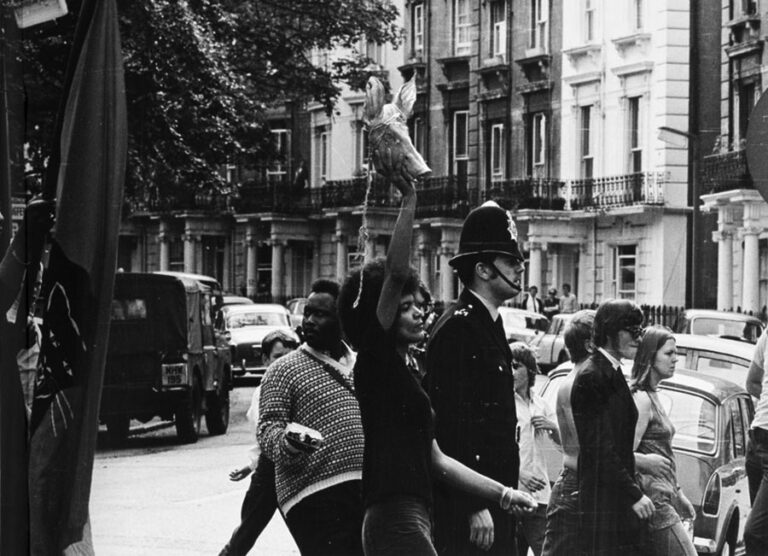
This pilot project was born out of a workshop at Stillpoint Spaces in June 2019. A diverse group of people from different personal and professional backgrounds came together to look at the themes of race and racism. As part of the day, participants broke up into smaller groups. One of the sub-groups looked at how archives, education and engagement could address the themes of the day.
In response to this day, The National Archives developed in collaboration with Stillpoint Spaces and the Counsellor and Poetry Therapist, Charmaine Pollard, a programme of workshops under the heading of ‘Racism Past and Present’. One of the aims of the workshop series was to offer to tell the long story of the black community in Britain from the end of the First World War though to the early 1970s.
For all of us on the project this went to the heart of exploring race and racism: the need to take into account this wider arc of history, for example from colonial subject to British citizen, so that in talking about more contemporary events we would have a grounding not only in the immediate past but could look further back.
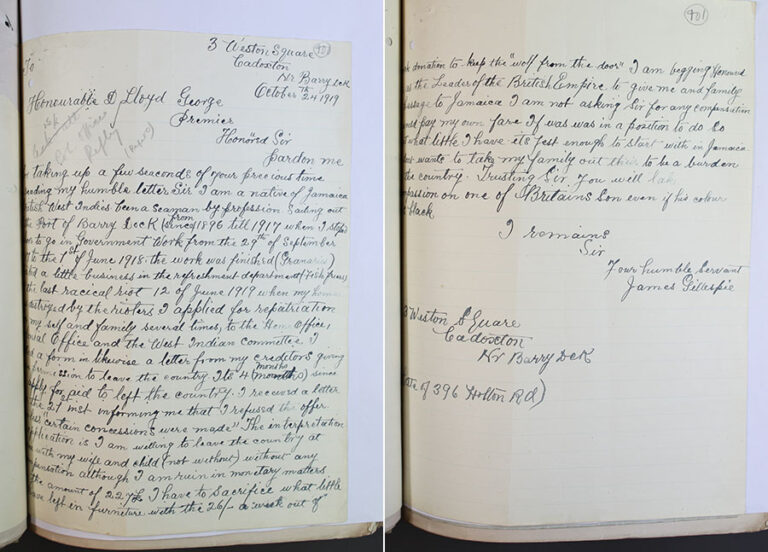
Iqbal Singh, Regional Community Partnerships Manager at The National Archives, drew us into the story following the end of the First World War, when many in Britain first became aware of a black community in their midst following the racial rioting in 1919. Iqbal drew our attention to some of the documents at The National Archives that record correspondence from British cities such as Cardiff and Liverpool – cities that were heavily affected by this post-war outbreak of violence and unrest ostensibly caused by growing racial tensions between black and white communities.
In particular Iqbal drew our attention to one letter from the Jamaican seafarer James Gillespie, which is in The National Archives collection. In the letter Gillespie addresses Prime Minister David Lloyd George, requesting safe travel back to Jamaica for his white wife and child, as his fish and chip shop in Barry was attacked and closed for business in the wake of the 1919 riots. (Find out more in this podcast).
Following Iqbal’s presentation workshop attendees wrote a letter to Gillespie as a way of trying to understand how deeply torn he was between his loyalty as a colonial subject, and the difficulties him and his family were experiencing in post-First World War Britain.
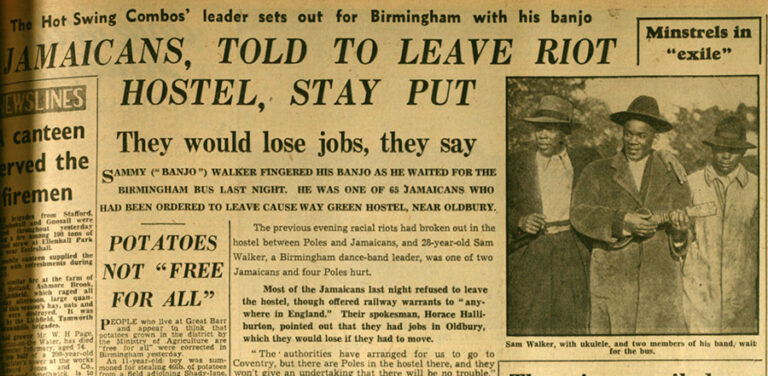
The second talk in the series homed in on the experiences of the post-war generation of migrants, often described as the ‘Windrush generation’. Kevin Searle, a records specialist at The National Archives, presented research on a series of little-known anti-black disturbances that took place at Ministry of Labour-run hostels in the late 1940s. (Find out more in this blog post).
These hostels housed groups of migrant workers, including displaced persons after the war, those recruited by the European Volunteer Workers scheme, as well as Caribbean migrants, to labour in understaffed – and frequently undesirable – roles in industries in different parts of the country. However, they soon became sites of unrest, often triggered by the resentment shown towards black men dancing with white women in local pubs.
Kevin’s workshop highlighted how the black men were never passive victims of the attacks, even when the perpetrators were backed-up by the Ministry of Labour’s response: to evict the Caribbeans, and impose a quota limiting the number of black people allowed to stay at government-run hostels at any one time. The presentation triggered a personal discussion – which went somewhat off-script, but in a very moving way – with audience members sharing some of their own, often very poignant, lived experiences of racism.
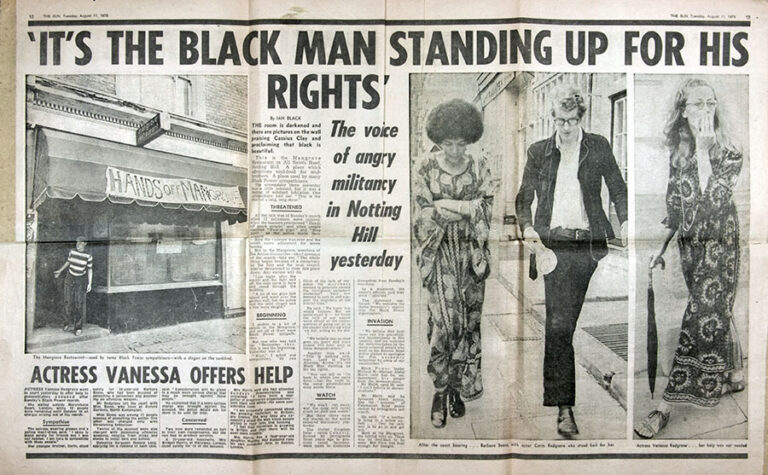
We ended the series of workshops with a session on the Mangrove Nine. Vicky Iglikowski-Broad, Principal Record Specialist, Diverse Histories at The National Archives, explored some of The National Archives’ unique and emotive archive material around racism and resistance in the late 1960s and early 1970s.
The trial of the Mangrove Nine in 1970 represented a high point of the Black Panther movement in the UK and stands as a watershed moment for black activism. The archive material offers the opportunity to look at previously secret Metropolitan Police reports on ‘black activism’, posters of the Black Panthers movement and striking images of the protest themselves.
While these records were kept for the purpose of policing and ultimately trying to suppress the movement, they can now tell us a huge amount about the struggle and the protesters themselves; the way they protested initially through the Race Relations Board, then on the streets and then through the courts.
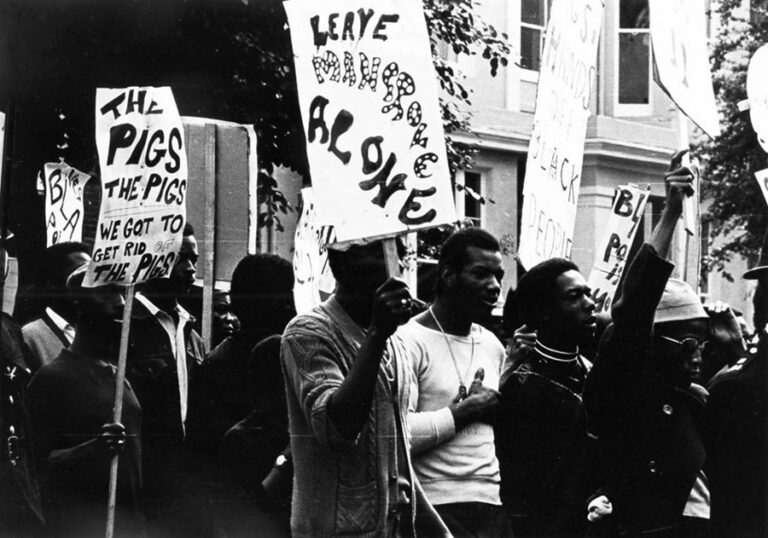
The trial of the Mangrove Nine campaigners attracted significant press attention at the time and for many people it is still within living memory. (More information about the Mangrove Nine can be found in this blog post). This session was delivered online – you can watch it here:
Underpinning the workshops has been a series of therapeutic interventions, led by Charmaine Pollard, which allowed those attending each workshop to have a space to process any emotional responses to the material from the archives.
Following the standard invitation to ask the speaker questions about the history and archival materials, the workshop uniquely offered those attending a chance, with a therapist present, to start the necessary work of disentangling ‘fact’ from ‘feeling’. Attendees were asked to say how they felt about what they had heard, and to also take part in a carefully crafted exercise to help channel these energies.
In the first workshop on 1919, workshop attendees wrote their own heartfelt letters to James Gillespie. In the second workshop, attendees spent some time listening and sharing experiences of racism as a way of connecting with the men in the hostels who were victimised and attacked for being black. The final workshop, inspired by the case of the Mangrove Nine, invited the audience to think about the actions each of us can take, each in our own way, to the challenges posed by racism.
Workshop exercise
Try the following exercise, ideally with a friend.
Having watched Vicky’s video talk, complete the sentence:
‘After hearing about the Mangrove Nine, I feel …’
For this type of writing, there will be no need to worry about grammar, spelling or punctuation. Ask a friend to join you in doing the same. Then exchange notes.
You are about to create an acrostic of the word ACTIVISM. In an acrostic, the letters of a word or phrase are written vertically down the page and each letter begins a new line. For each letter think of a word that you associate with the letter inspired by Vicky’s talk.
Exchange notes again. Did you choose any of the same words? Did you choose different words? Discuss your choices and emotions that rose to the surface.
End the exercise by asking yourself: ‘What can I commit to?’ Try using the following sentence stem to start you off: I can commit …
Write for three minutes. Share what you wrote.
Thoroughly enjoyed reading this, not for the content obviously, but because it’s a part of 20C British history that should be explored. I’m from Cardiff and live in Barry and it was through local historians that I was first introduced to The Race Riots. I was so touched by the story of one killing that I wrote a script about it for an OU module. I will definitely be reading more about this topic.